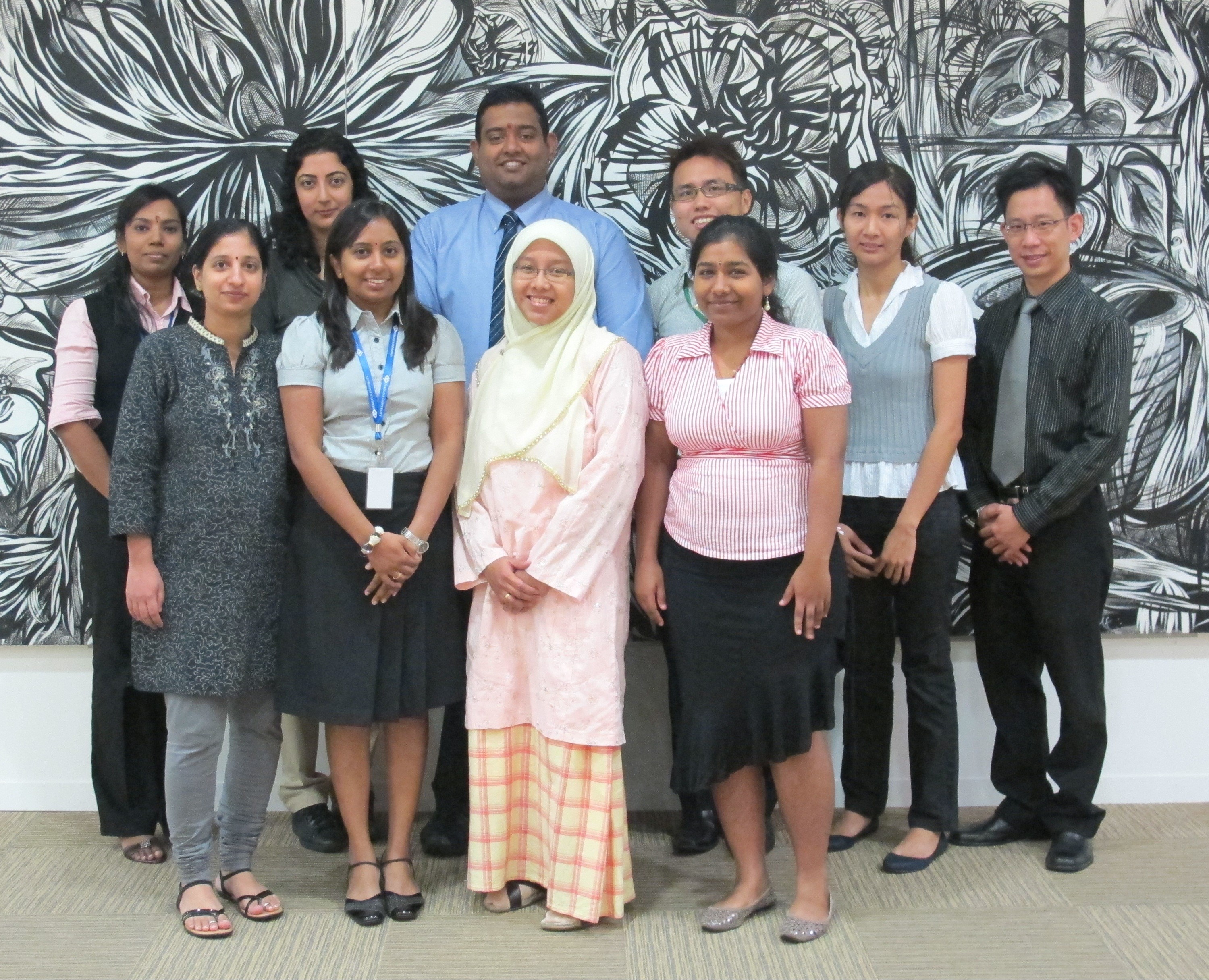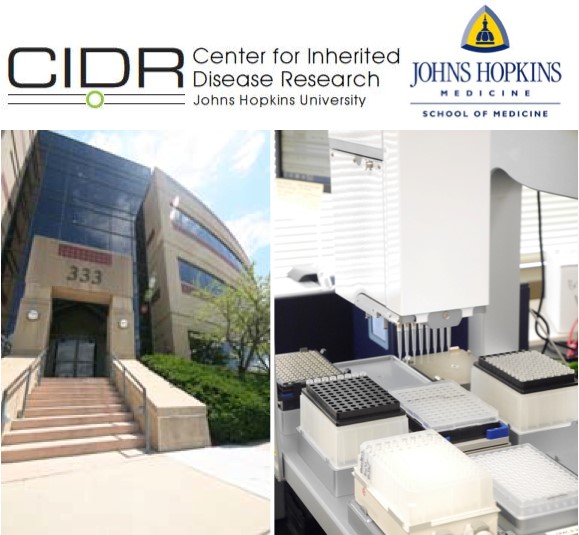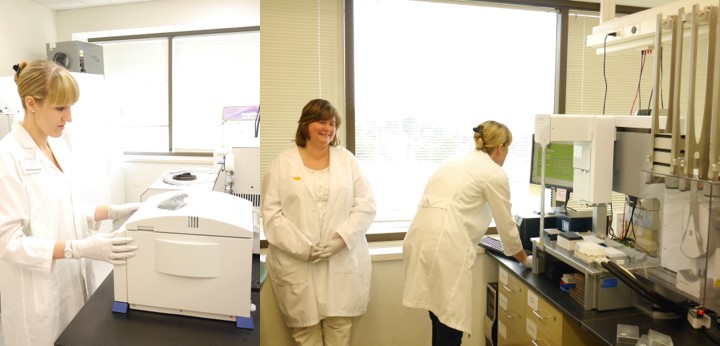Dr Abhi Veerakumarasivam, one of the two recipients of the 2012-2013 Merdeka Award Grant for International Attachment is currently a visiting scientist at the Institute of Genetic Medicine, Johns Hopkins School of Medicine, Baltimore, Maryland, United States of America. In this post, he shares his views on the impact of the Human Genetic Project, the current value of individual genetic sequencing and the experience at the Center of Inherited Disease Research at Hopkins.
“At bottom every man knows well enough that he is a unique being, only once on this earth; and by no extraordinary chance will such a marvelously picturesque piece of diversity in unity as he is, ever be put together a second time.”
– Friedrich Nietzsche (1844-1900)
The inward voyage to explore the greatest mystery of the biochemical components that define our individuality, the Human Genome Project was an unprecedented international research effort. Completed in April 2003, the draft map of the human genome (all the genes in a human cell) is readily available to anyone on the internet. The magnitude and accessibility of these findings truly resulted in a paradigm shift that has revolutionised biomedical research. One of the primary goals of the USD 3 billion project was to identify the genetic roots of inherited birth defects and common diseases such as cancer and Alzheimer’s and to generate therapeutic modalities to treat these diseases. However, the immediate and direct clinical translation of the findings from the Human Genome Project has proven to be limited at best. A major reason is because the genomic blueprint was a representative sequence of a small number of anonymous donors. The scientific community very quickly realised that although the Human Genome Project improved our understanding of the nature’s blueprint and certainly accelerated the innovation of technologies that help us better probe the genome; the reference human genome only serves as a scaffold to build new scientific questions that can help bridge the knowledge gaps that impede the clinical translation of research discoveries from bench to bedside. As genetic pioneer, Eric Lander succinctly put ‘Genome: bought the book, hard to read’.
I am not sure how much Nietzsche, a 19
th century philologist, poet, composer and philosopher who passed away more than 50 years before Watson and Crick discovered the structure of DNA, understood the science of genetics. However, his quote truly captures how each individual is a product of complex interactions and interplay between the intrinsic (genes) and extrinsic (society and environment) factors. It is this individuality that makes us especially unique but it also explains why diseases manifest, progress and respond to therapies differently in different patients. It is now widely recognised that although the DNA sequence is relatively static in one’s lifetime (with some sporadic mutations as exceptions), the way the genome encodes for specific proteins that makes us who we are is factored by our constant interaction with the environment, a phenomenon known as epigenetics. One easy way of understanding the epigenetic phenomenon is to take identical twins, who are a product of the same egg and sperm; i.e. having the same DNA sequence. Yet, as the twins grow into adulthood, the once visibly inseparable pair starts developing unique features, for instance changes in muscle bulk, hair volume, height, weight, wrinkle, complexion etc. If the DNA sequence was the sole determining factor for our physical traits, why do these acquired variations between identical twins develop?
Although trained in cancer genetics, I work very closely with a group of Malaysian clinical geneticists in deciphering the genotype (genetic makeup of individuals) and correlating it with the disease phenotype (observable disease characteristics of the individual) for a myriad of birth defects. As a geneticist, I use the findings from the human genome project everyday to try and better understand the various genetic questions my research group runs experiments to decode the genetics of our population and to translate this understanding to better management of specific diseases. However, I am fully cognizant of the fact that each of these individual Malaysian patients are truly unique and the reference sequence used from the Human Genome Project does not truly reflect the Malaysian genetic diversity. It certainly does not reflect the stochastic environmental factors that control the genome.
The immediate intuitive solution would be to sequence every Malaysian. Besides, the socio-ethico-legal implications and the cost implications which will be a topic of future discussion, the biggest hurdle is the ability for precise sequencing and delineating the sequence variation to the particular disease trait. Although progress has been made in the field of cancer and neurogenetics, we are still at the initial stages of deciphering the specific genotypic-phenotypic correlations. We need to appreciate that the genome in each individual cell in the body consists of 3 billion pieces of information (known as nucleotides). The way the nucleotides are ordered in a particular sequence governs the way proteins in the body are made. It is now widely accepted that as a species, we humans share 99.9% homology in sequence, i.e that every individual regardless of race, colour, creed and social standing share 99.9% of the same DNA sequence. This also means that every individual has a unique 0.1% sequence combination, translating to a difference in 3 million variations in the sequence! And most diseases are a combinatorial product of these genetic variations amplified by lifestyle habits and environmental factors that are not easily quantifiable.
Hence, the hope is that as the sequencing technology improves and the cost becomes cheaper, scientists will be able to sequence more individuals that share a specific trait or disease and try to understand what are the genetic predisposing factors that cause the disease. By delineating these genetic variations, it is possible then to individualise the management of patients by designing drugs that can help to target the specific genetic perturbations that affect selected patients. In the field of cancer for instance, the ability to sequence large group of cancer patients have helped identify subsets of cancers that may or may not benefit from specific therapies. The prognostic ability to predict an individual’s future response in therapy has proven to reduce the mortality and morbidity associated with specific subtypes of breast cancer. In addition, by understanding the genetic component, we will also be able to dissect the environmental factors that enhance the disease risk in high-risk populations and be able to develop preventive modalities to help mitigate future complications. This will have huge positive public health impact. Thus, there is collective need to improve the sequencing efficiency and the ability to define the functional genotypic-phenotypic correlations better in various different populations. Only then, will the clinical promise for precise individualised genomic medicine become a reality for not just the exclusive privileged but also to everyone. This message was evident in the American Association of Cancer Research Annual Meeting that I attended before arriving at Hopkins (read previous
post).

Members of the Veerakumarasivam research laboratory that work on answering various genetic research questions. The research team is based across two institutions, Universiti Putra Malaysia and Perdana University and comprises of post-doctoral fellows, graduate students and research technicians. The team also works with various local and international institutions in collaborative research efforts.
The Merdeka Award Grant for International Attachment has provided me with an opportunity of a lifetime to acquire the knowledge and wisdom of experience to probe and understand the functionality of the human genome through the use of the latest sequencing technologies from leaders in the field. I am currently at the world famous, Johns Hopkins University School of Medicine. My primary base is at the Institute of Genetic Medicine under the mentorship of Prof Dr David Valle who is also the director of the institute. I am also meeting and learning from various different research groups, and I will attempt to share the knowledge and experience in the following series of posts. To equip myself with the technological advancements in the genomic sequencing, I have also anchored myself at the Center of Inherited Disease Research (CIDR). CIDR is not only the leading genomic sequencing facility at Johns Hopkins but it also provides high quality next generation sequencing and genotyping services to investigators across America and are also involved in various international consortiums. Located about 3 miles from the historic Johns Hopkins School of Medicine, CIDR also provides assistance in study design, quality controls and more importantly the necessary post-sequencing analysis and statistical support.
 Center of Inherited Disease Research at Johns Hopkins is an international leader in genetic sequencing for the purposes of better understanding of disease processes as well as clinical diagnostic utilities. The institute houses the most-advanced robotic high-throughput genetic sequencing and analytical technologies.
Center of Inherited Disease Research at Johns Hopkins is an international leader in genetic sequencing for the purposes of better understanding of disease processes as well as clinical diagnostic utilities. The institute houses the most-advanced robotic high-throughput genetic sequencing and analytical technologies.
CIDR has been involved and completed the analysis of more than 800,000 samples and published in more than 600 high-impact peer-reviewed publications. It is very impressive, considering that only 60 highly skilled and informed scientists, technicians and administrators staff the center. CIDR not only epitomises efficiency but it also exudes sincere dedication to enhancing the capacity to understand the genome. I have been truly impressed by their congeniality and willingness to share priceless information. The center under the directorship of Dr Kim Doheny has been very welcoming and the research team is excited to work on the collaborative projects I have proposed. I have been truly amazed by the openness of the research staff, in particular Dr Dane Witmer and Beth Marosy who have been amazing. They have given me full access to all the protocols and even designed a nice-training module for visiting scientists like myself. I am currently working on some Malaysian cancer samples that are being sequenced at CIDR. This exercise will prove to be useful, as it will help me understand the overall technological pipeline, both the opportunities and challenges. Without the support of the Merdeka Award Grant, this would not have been possible.
I am really excited to share the specific details of the technology know-how and the opportunities available at CIDR with my colleagues in Malaysia. I have been invited by the Medical Genetics Society of Malaysia to give two talks at an annual national conference in December and I will use that as a platform to share this experience with more Malaysian scientists. The details on the current state of individualised genetic sequencing and the history of individualised medicine will be the subject of the next posts.
 The research scientists demonstrate the sequencing platforms at the Center of Inherited Disease Research. The platform is highly regularized with necessary quality controls and is automated as much as possible to ensure minimal technical biases.
Watch this page for further update from Dr Abhi
The research scientists demonstrate the sequencing platforms at the Center of Inherited Disease Research. The platform is highly regularized with necessary quality controls and is automated as much as possible to ensure minimal technical biases.
Watch this page for further update from Dr Abhi